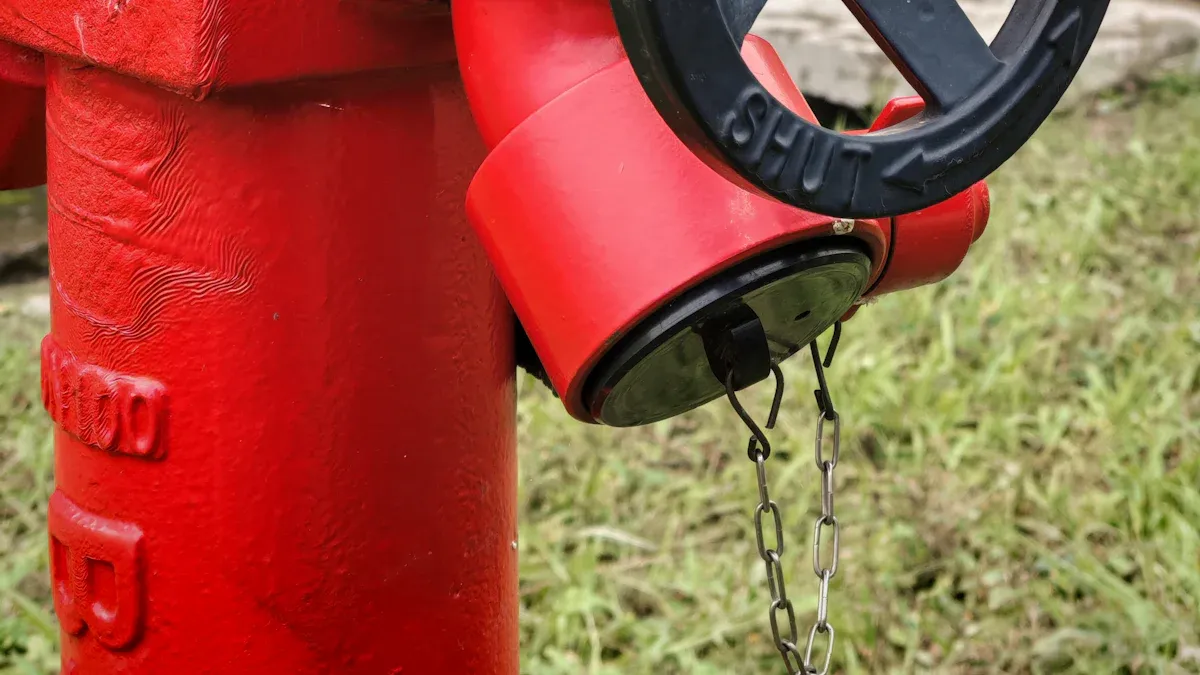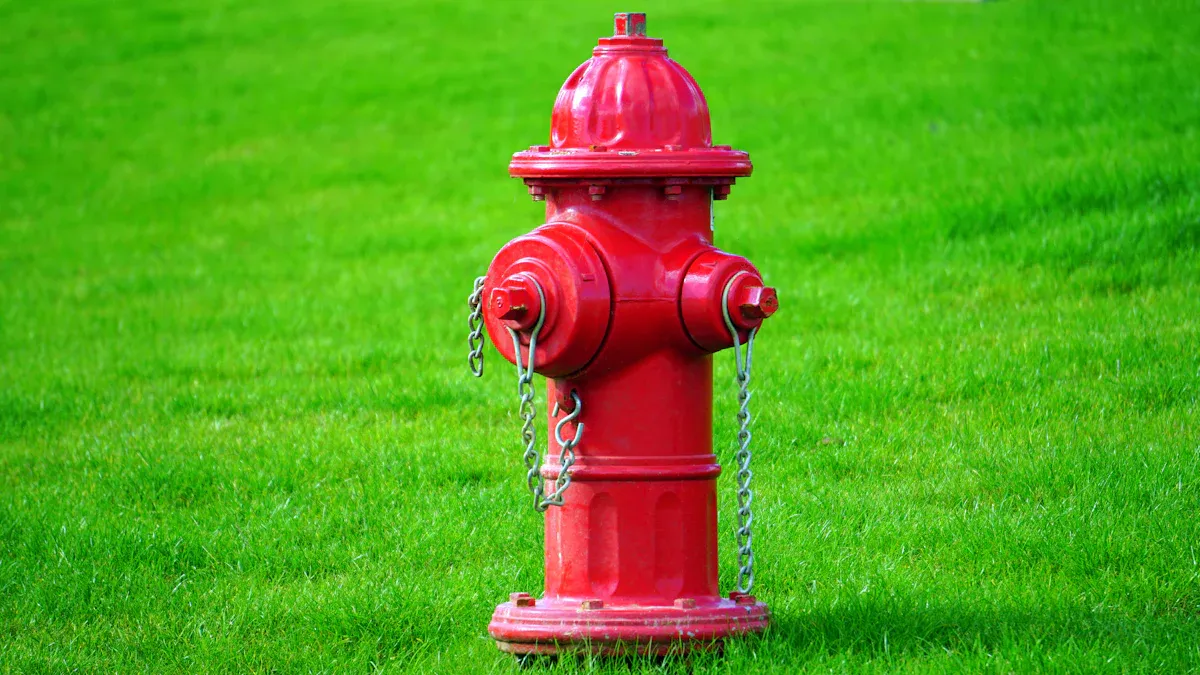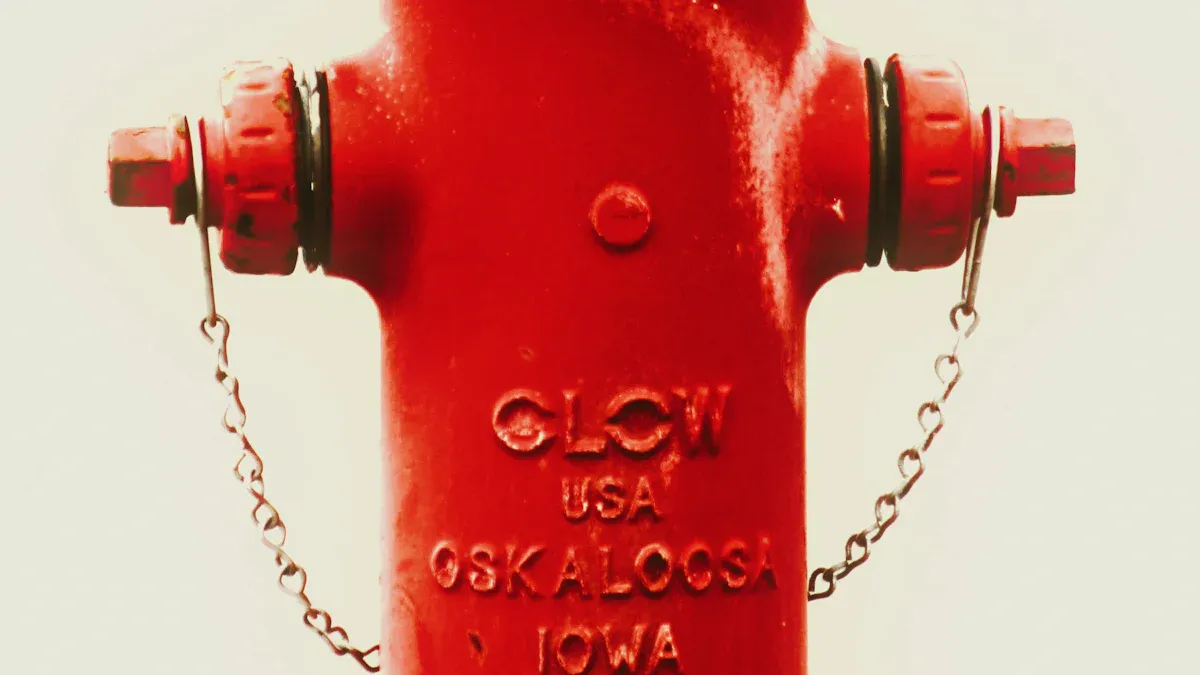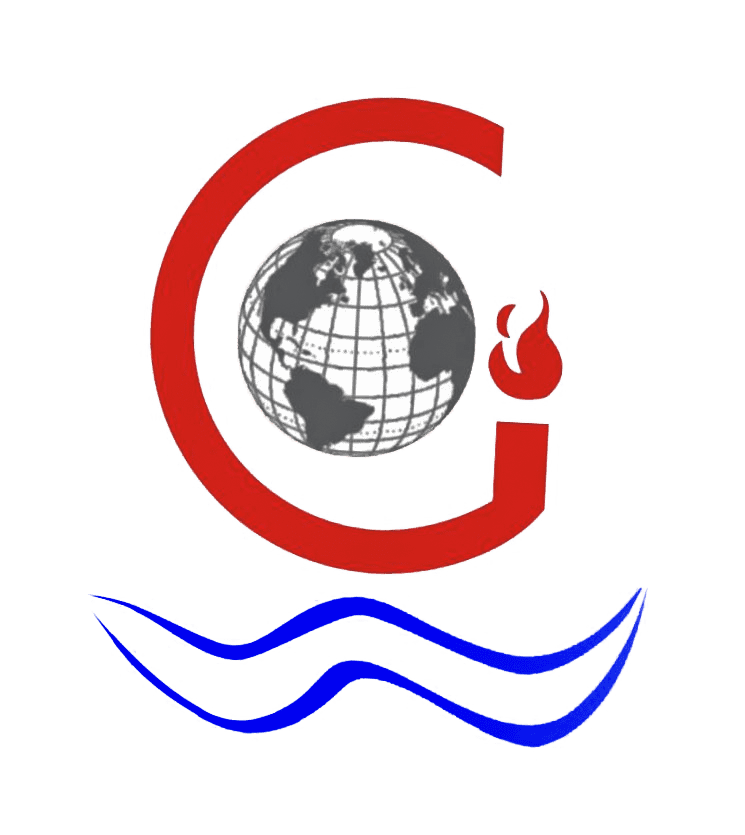
Fire hydrant systems play a pivotal role in protecting urban areas during emergencies. Excessive water pressure can compromise their functionality, leading to inefficiencies or damage. Pressure restricting valves address this issue by ensuring controlled water flow. Case studies highlight how these solutions improve fire hydrant valve performance, fire hose reliability, and fire hose reel operations.
Key Takeaways
- Pressure restricting valves (PRVs) control water pressure to keep systems safe.
- Using PRVs can cut water leaks by over 31%, saving water and money.
- Custom solutions for cities or factories make fire hydrants work better.
Fire Hydrant Systems and Pressure Restricting Valves

Overview of Fire Hydrant Systems
Fire hydrant systems form the backbone of urban firefighting infrastructure. These systems ensure a reliable water supply during emergencies, enabling firefighters to combat fires effectively. Traditional fire hydrants undergo rigorous testing to maintain operational efficiency. For instance, trials conducted during minimum night flow periods revealed flow rates ranging from 9.615 m³/h to 10.56 m³/h over durations of 180 to 240 seconds. Despite these measures, pressure errors in calibrated networks can still exceed 0.1 kg/cm², highlighting the need for further optimization.
Challenges in Fire Hydrant Systems
Urban environments present unique challenges for fire hydrant systems. Research underscores the importance of strategic hydrant placement, as the distance between hydrants directly affects response times. Inadequate placement can compromise water availability, reducing firefighting efficiency. Additionally, aging infrastructure and excessive water pressure often lead to leaks, bursts, and increased repair costs. These issues emphasize the necessity of innovative solutions to enhance system reliability and performance.
Role of Pressure Restricting Valves in Optimization
Pressure restricting valves (PRVs) play a crucial role in addressing the challenges faced by fire hydrant systems. By regulating water pressure, PRVs minimize leakages and prevent infrastructure damage. Studies demonstrate that integrating PRVs into water distribution systems can reduce leakages by 31.65% and improve technical performance indicators from 79.81% to 97.45%. Furthermore, PRVs contribute to water conservation by reducing flow rates, which lowers consumption and extends the lifespan of assets. With installation costs averaging $500,000 and a payback period of 2-4 years, PRVs offer a cost-effective solution for optimizing fire hydrant systems.
Benefits of Pressure Restricting Valves in Fire Hydrant Systems
Regulating Water Pressure for Safety
Pressure restricting valves play a vital role in maintaining safe water pressure levels within fire hydrant systems. Excessive water pressure can lead to dangerous surges, which may compromise the integrity of the system and pose risks to firefighters during emergencies. By controlling the flow of water, these valves ensure that the pressure remains within optimal ranges, reducing the likelihood of accidents or equipment failure.
In urban areas, where water pressure often fluctuates due to high demand, pressure restricting valves act as a safeguard. They prevent sudden pressure spikes that could damage fire hydrants or connected equipment. This regulation not only enhances the safety of firefighting operations but also ensures that water is delivered consistently and reliably during critical moments.
Preventing Infrastructure Damage
Uncontrolled water pressure can wreak havoc on infrastructure, causing leaks, pipe bursts, and other costly damages. Pressure restricting valves mitigate these risks by maintaining stable pressure levels throughout the system. Case studies have shown significant improvements in infrastructure reliability after implementing these valves. Key benefits include:
- Reduction in leakage rates, minimizing water wastage.
- Decrease in pipe breaks, lowering repair and replacement costs.
- Prevention of new leak points, extending the lifespan of the system.
- Improved reliability of the water supply system, ensuring uninterrupted service.
- Minimization of disruptions to traffic flow caused by emergency repairs.
- Prevention of interruptions to commercial activities, safeguarding economic stability.
- Averting damage to surrounding infrastructure, preserving urban environments.
By addressing these issues, pressure restricting valves not only protect the physical components of fire hydrant systems but also contribute to the overall resilience of urban infrastructure.
Enhancing Firefighting Efficiency
Efficient firefighting relies on a steady and reliable water supply. Pressure restricting valves enhance this efficiency by eliminating pressure surges and ensuring consistent water flow. Advanced technologies, such as pressure reducing valves and anti-surge pump control valves, play a crucial role in optimizing system performance. These components prevent water hammer effects, which can damage pipes and reduce operational effectiveness.
Additional innovations, such as fire pump control valves and surge preventing bladder tanks, further support firefighting efforts. Fire pump control valves regulate water release, maintaining effective pressure levels during emergencies. Surge preventing bladder tanks absorb pressure waves, increasing system capacity and preventing damage. Together, these technologies create a robust and efficient firefighting infrastructure, enabling rapid response and minimizing fire-related damages.
The integration of pressure restricting valves into fire hydrant systems not only improves operational efficiency but also ensures that firefighters can perform their duties without unnecessary hindrances. This optimization ultimately saves lives and protects property during emergencies.
Case Studies: Optimizing Fire Hydrant Systems

Urban High-Rise District with Excessive Water Pressure
Urban high-rise districts often face challenges related to excessive water pressure. These areas require advanced pressure control methods to ensure the safety and efficiency of fire hydrant systems. Statistical analysis reveals that reducing water pressure by 60 psi can significantly lower annual leakage, from 189 million gallons to 80 million gallons. This reduction not only conserves water but also minimizes the risk of infrastructure damage. Installing pressure reducing valves (PRVs) in such districts has proven to be a cost-effective solution, with a payback period of two to four years.
Pressure restricting valves also enhance firefighting operations in high-rise buildings by maintaining consistent water flow. Without these valves, excessive pressure can lead to equipment failure or dangerous surges during emergencies. By stabilizing pressure, PRVs ensure that fire hydrants deliver water reliably, even in areas with fluctuating demand.
Suburban Community with Aging Infrastructure
Suburban communities with aging infrastructure often experience frequent leaks and pipe bursts. These issues arise due to deteriorating materials and inconsistent water pressure. Pressure restricting valves address these challenges by maintaining stable pressure levels, which reduces stress on the system.
Case studies highlight several benefits of implementing PRVs in suburban areas:
- A significant decrease in leakage rates, leading to water conservation.
- Fewer pipe breaks, resulting in lower repair costs.
- Extended lifespan of the existing infrastructure.
By integrating PRVs into fire hydrant systems, suburban communities can improve reliability and reduce maintenance expenses. This optimization ensures that residents have access to a dependable water supply during emergencies.
Industrial Zone with Variable Water Demand
Industrial zones present unique challenges due to their variable water demand. Pressure restricting valves, such as GVS and pilot-operated PRVs, effectively manage these fluctuations. Studies show that GVS valves maintain a pressure differential below 0.1 bar across a wide range of flow rates. This stability ensures consistent performance, even during significant discharge changes.
Key findings from industrial applications include:
- GVS valves limit pressure peaks to below 0.6 bar, preventing damage during high-demand periods.
- Pilot-operated PRVs perform well under low discharge conditions but may experience higher pressure differentials during peak demand.
- The GVS reduces the interquartile range of pressure regulation by 38%, indicating superior stability.
These results demonstrate the importance of selecting the right valve type for industrial zones. By optimizing pressure management, fire hydrant systems in these areas can support both routine operations and emergency responses effectively.
Lessons Learned from Case Studies
The case studies underscore the versatility and effectiveness of pressure restricting valves in diverse scenarios. Key takeaways include:
- Tailored Solutions: Each environment, whether urban, suburban, or industrial, requires customized pressure management strategies.
- Cost-Effectiveness: PRVs offer significant operational savings, with short payback periods.
- Enhanced Reliability: Stable pressure levels reduce infrastructure stress, extending the lifespan of fire hydrant systems.
- Improved Safety: Consistent water flow ensures that firefighting operations remain efficient and effective.
These lessons highlight the critical role of pressure restricting valves in optimizing fire hydrant systems. By addressing specific challenges, these valves contribute to safer and more resilient communities.
Best Practices for Implementing Pressure Restricting Valves
System Assessment and Planning
Effective implementation of pressure restricting valves begins with a thorough system assessment. Engineers must evaluate the existing infrastructure to identify pressure-related challenges. This process includes analyzing water flow patterns, pressure fluctuations, and the condition of pipes and hydrants. Planning should prioritize areas with high water demand or aging infrastructure. By addressing these factors, stakeholders can ensure that the system operates efficiently and reliably.
Selecting the Right Valve Type
Choosing the appropriate valve type is critical for achieving optimal performance. Different environments require specific valve designs to meet unique demands. For instance, urban high-rise districts benefit from pressure reducing valves that stabilize excessive water pressure. Industrial zones with variable water demand often require pilot-operated valves for precise control. Consulting with manufacturers, such as Yuyao World Fire Fighting Equipment Factory, ensures that the selected valves align with system requirements and operational goals.
Installation and Maintenance Guidelines
Proper installation and maintenance are essential for the long-term functionality of pressure restricting valves. Key guidelines include:
- Install valves within their rated temperature and pressure limits.
- Provide sufficient space for maintenance access.
- Securely mount valves to minimize vibration.
- Orient valves correctly to ensure proper media flow.
- Check for leaks after installation.
- Use filters to prevent contaminants from affecting valve operation.
Establishing a preventative maintenance schedule further enhances system reliability. Maintenance plans should consider factors such as pressure, temperature, and operational cycles. Collaborating with valve suppliers for tailored recommendations ensures optimal performance.
Collaboration with Stakeholders
Collaboration among engineers, city planners, and fire safety organizations plays a pivotal role in system upgrades. For example, partnerships between fire departments and data scientists have led to predictive models that identify high-risk areas prone to fires. These models enable targeted prevention campaigns, reducing fire risks. Similarly, joint efforts between fire safety consultancies and smart city initiatives have resulted in sensor-equipped buildings that detect smoke and trigger evacuation protocols automatically. Such collaborations foster innovative solutions and improve emergency response capabilities.
| Example Description | Benefit of Collaboration |
|---|---|
| A historic theater implemented fire safety upgrades, including sprinkler systems and fire-resistant curtains. During a minor fire, swift response prevented major damage. | Enhanced fire safety measures leading to effective emergency response. |
| A partnership between fire departments and data scientists developed predictive models to identify high-risk areas. | Data-driven prevention strategies to mitigate fire risks. |
Role of Yuyao World Fire Fighting Equipment Factory in Providing Solutions
Yuyao World Fire Fighting Equipment Factory has established itself as a trusted provider of pressure restricting valves. The company offers a wide range of high-quality valves designed to meet diverse operational needs. Their expertise ensures that clients receive tailored solutions, whether for urban, suburban, or industrial applications. By prioritizing innovation and reliability, Yuyao World Fire Fighting Equipment Factory contributes to safer and more efficient fire hydrant systems worldwide.
Pressure restricting valves significantly enhance fire hydrant systems by improving safety, reducing infrastructure damage, and optimizing firefighting efficiency.
Case studies demonstrate the importance of tailored solutions for urban, suburban, and industrial settings. These insights highlight the versatility of pressure management strategies.
FAQ
What are pressure restricting valves, and how do they work?
Pressure restricting valves regulate water pressure in fire hydrant systems. They control flow rates, ensuring consistent and safe pressure levels to prevent damage and enhance firefighting efficiency.
Can pressure restricting valves be used in all types of fire hydrant systems?
Yes, pressure restricting valves suit various systems, including urban, suburban, and industrial setups. Their adaptability ensures optimal performance across diverse operational environments.
How does Yuyao World Fire Fighting Equipment Factory support valve implementation?
Yuyao World Fire Fighting Equipment Factory provides high-quality, tailored pressure restricting valves. Their expertise ensures reliable solutions for optimizing fire hydrant systems in any setting.
Tip: Consult professionals to select the right valve type for your specific system needs.
Post time: May-01-2025

